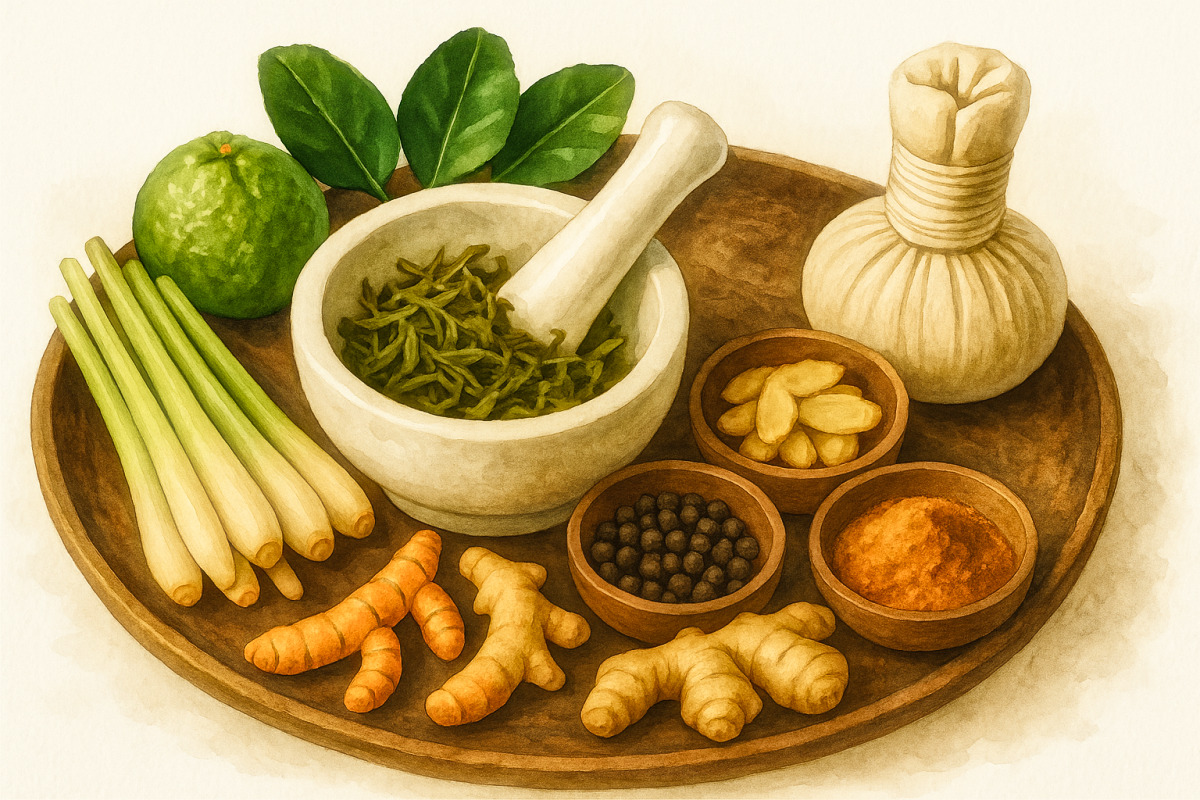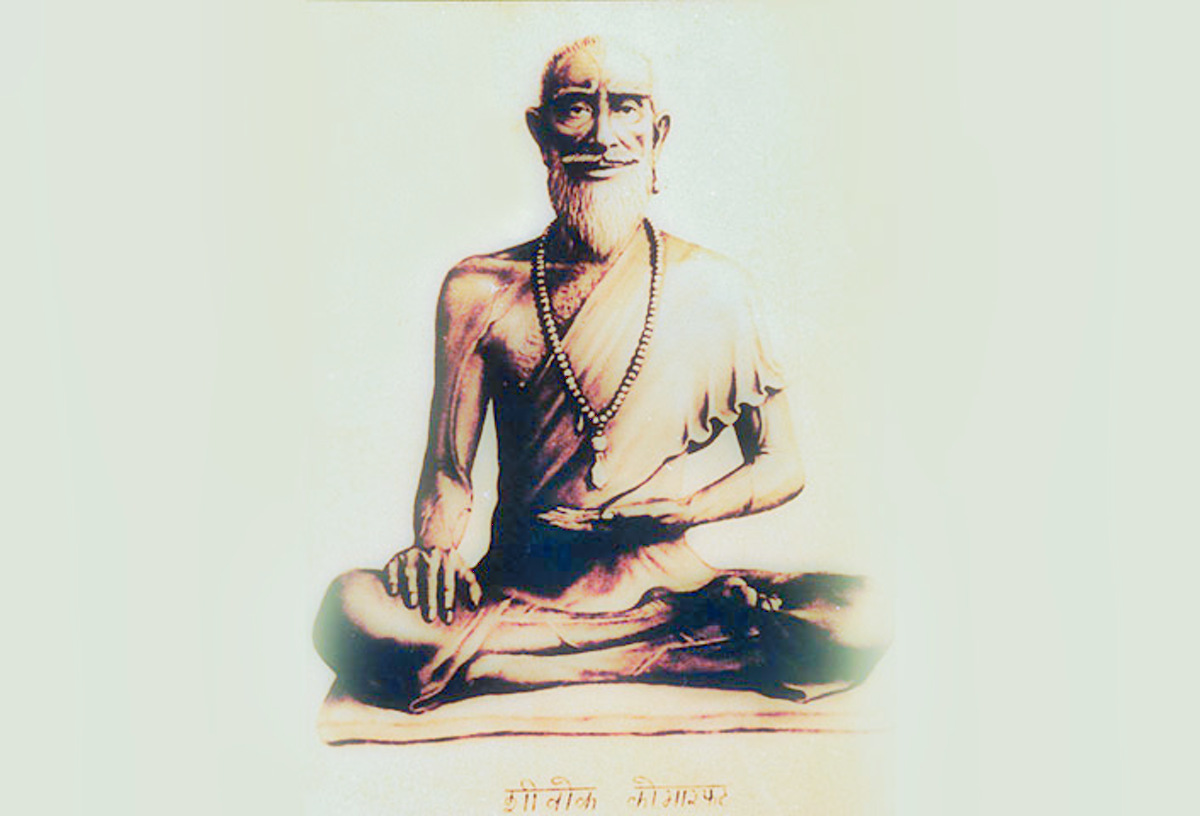In Thai Traditional Medicine (TTM), true healing begins with understanding the root causes of illness. When these underlying causes are addressed and the body is brought back into balance, the body has the natural ability to heal itself.
TTM identifies four primary causes of illness, along with eight behavioral causes. Together, they offer a holistic framework for both healing and prevention.
1. The Four Elements
All living beings are made up of four essential elements: earth, water, wind, and fire. Illness arises when these elements become unbalanced. Each element has its own qualities and tendencies toward disorder:
Earth Element
Earth represents structure, solidity, and form. It is the foundation of the body’s tissues and organs. Imbalances often arise from:
Heart
New food (food that has been ingested and is now in the stomach or small intestine)
Old food (waste materials waiting to be excreted as feces)
Of these, old food is often the most problematic, as waste retention can lead to toxins and disease.
Water Element
Water gives fluidity and cohesion to the body. It governs all bodily fluids, including mucus, blood plasma, and urine. Three vulnerable areas include:
Upper region from the neck to the head (mucus, phlegm, sinus issues)
Middle region from neck to the stomach (digestive fluids, bile)
Lower region the intestines to the anus (waste elimination and urinary tract)
The lower region is often the most troublesome.
Wind Element
Wind governs all forms of movement and flow—such as breathing, digestion, nerve impulses, and blood circulation. Disorders often stem from:
Heart-related winds, affecting the heartbeat and emotions.
Sharp, weapon-like winds, affecting the nervous system and small blood vessels
Central body winds, related to the main channels running through the torso (including arteries, spinal cord, and the central nervous system)
Wind-related imbalances, especially those involving the central channels, tend to cause more serious illness.
Fire Element
Fire governs heat, digestion, transformation, and aging. It plays a key role in metabolism. Disruptions may arise from:
Fire within the organs, such as bile or digestive enzymes
Fire outside the organs, such as hormones and metabolic activity
Flames of internal heat, such as inflammation or overheated organs
Flames of internal heat is usually the most intense and harmful form of fire imbalance.
2. Seasons
Changes in the seasons affect the body’s internal balance. Illness often occurs when the body fails to adapt to these shifts. Each season influences the elements in different ways:
Hot season: Increases fire-related conditions like fevers and skin rashes
Rainy season: Aggravates wind-related issues like bloating, dizziness, and indigestion
Cold season: Triggers water-related symptoms such as congestion and excess phlegm
Herbal remedies are often used in TTM to help the body adjust smoothly to seasonal changes.
3. Age
Our elemental balance also shifts as we age. Each stage of life tends to be dominated by a different element:
Early age (0–16): Water dominates. Illness often begins with congestion (water), followed by fever (fire), and finally fatigue (wind).
Middle age (16–32): Fire becomes stronger. Sickness often starts with fever (fire), followed by wind symptoms like dizziness, and later mucus buildup (water).
Older age (32+): Wind dominates. Illness typically begins with wind-related symptoms like bloating, fatigue, or joint pain, then moves into water symptoms like congestion, and finally fire, such as fever.
In TTM, old age is considered to begin earlier than in modern medicine, as a decline in physical vitality is often noticeable after age 30. Treatments are tailored accordingly—older adults often receive remedies that address wind, while younger adults may receive treatments that balance fire or water.
4. Time of Day
The time of day also affects the body’s internal elements:
Water (6–10 a.m. and 6–10 p.m.): This is when phlegm tends to increase, often causing symptoms like runny nose or headache.
Fire (10 a.m.–2 p.m. and 10 p.m.–2 a.m.): Fire is strongest during these hours. High fevers and digestive issues may worsen.
Wind (2–6 a.m. and 2–6 p.m.): This is a sensitive period for wind-related issues, such as asthma, fatigue, and heart-related symptoms.
Understanding these time rhythms helps TTM practitioners choose the best times for treatment, medicine, rest, or activity.
Behavior: The Eight Behavioral Causes of Illness
In addition to natural causes, TTM recognizes that our habits and daily actions play a vital role in maintaining health. The eight common behavioral causes of illness are:
Food – Overeating, skipping meals, or consuming spoiled, raw, or incompatible foods
Bodily movement – Inactivity or poor posture can disturb circulation and flexibility
Environment – Sudden exposure to heat, cold, or poor air quality can upset the body’s balance
Lack of sleep, food, or water – Ignoring basic needs weakens the body’s strength and resilience
Suppressing natural urges – Holding in urine or stool disrupts the body’s detox processes
Overwork – Excessive exertion without rest can deplete both physical and mental energy
Sadness – Prolonged grief or depression can lower immunity and reduce vitality
Anger – Chronic anger can cause both physical and emotional damage
Balanced daily routines are seen as just as important as medicine in preserving health.
TTM also includes the supernatural as a potential cause of illness. Illness may be the result of karma, or past actions. Therefore, healing may involve cultivating virtues such as generosity, mindfulness, compassion, and ethical conduct. In such situations, spiritual support may be sought from traditional healers or monks.
Thai Traditional Medicine offers a profound and holistic understanding of health. By recognizing the potential root causes of illness—elements, seasons, age, time, behavior, and karmic factors—we can care for our health at a deeper level, treating not just symptoms but the true source of imbalance.
This ancient wisdom reminds us to live in harmony with nature, time, and our own internal rhythms—embracing healing not only as treatment, but as a lifelong way of living.




